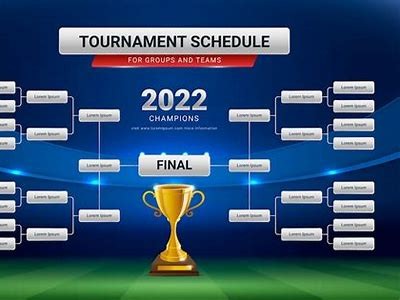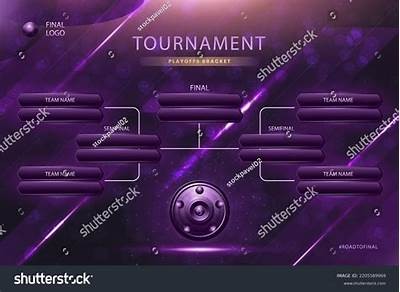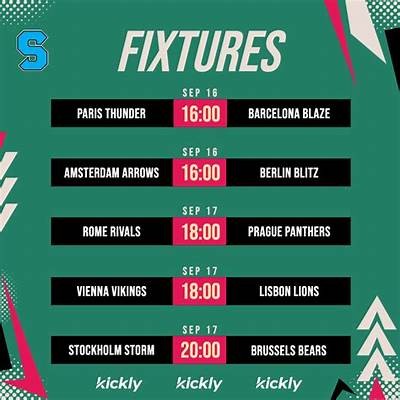Comprehensive Guide to GS Fixture Scheduling for Enhanced Tournament Organization
Comprehensive Guide to GS Fixture Scheduling for Enhanced Tournament Organization
In the world of sports, tournament organization plays a crucial role in ensuring fair play, excitement, and optimal participation. Among various tournament formats, the GS (Group Stage) fixture scheduling stands out for its ability to enhance competition and keep audiences engaged. This article serves as a comprehensive guide to mastering GS fixture scheduling, providing you with insights, strategies, and best practices to elevate your tournament organization.

Understanding the Basics of GS Fixture Scheduling
Before delving into the complexities of GS fixture scheduling, it is essential to grasp its foundational concepts. The GS format divides teams into groups where they compete against each other in a round-robin style. Each team plays every other team in its group, allowing for a comprehensive assessment of performance and skill level.

Importance of GS Fixture Scheduling
The significance of GS fixture scheduling goes beyond merely determining match pairings. A well-structured schedule ensures fairness, promotes competitive balance, and enhances the overall experience for both participants and spectators. It provides a clear framework for teams to showcase their abilities and can impact the tournament's outcome significantly.

Key Elements of Effective Fixture Scheduling
To create an effective GS fixture schedule, several key elements must be carefully considered:

- Team Placement: Strategically placing teams in groups based on skill levels can ensure competitive balance.
- Match Timing: Efficient scheduling of match times helps maintain audience interest while providing adequate recovery time for athletes.
- Site Selection: Choosing appropriate venues is essential for logistics and enhancing the spectator experience.
Step-by-Step Guide to Creating a GS Fixture Schedule
Creating a GS fixture schedule can be complex, but following a structured approach simplifies the process. Here’s a step-by-step guide:

Step 1: Collect Necessary Information
Gather data on participating teams, venue capacities, and any existing constraints such as travel restrictions or preferences. Understanding these variables is crucial for building a feasible schedule.
Step 2: Group Teams
Analyze the teams and group them based on predetermined criteria. This could include past performance, rankings, or geographical location. Effective grouping fosters competitive integrity and excitement.
Step 3: Allocate Venues and Match Times
Assign appropriate venues and time slots for matches. Ensure that the scheduling allows for reasonable recovery times between matches, particularly for teams playing multiple games in a short period.
Step 4: Publish the Schedule
Once finalized, publish the schedule through various channels to ensure all participants, officials, and fans are informed. Transparency in scheduling is key to avoiding misunderstandings and disputes.
Step 5: Monitor and Adjust
Be prepared to make adjustments based on unforeseen circumstances such as weather delays or team withdrawals. Having a flexible scheduling approach can help mitigate these issues.
Using Technology for GS Fixture Scheduling
In today's digital era, technology plays a significant role in tournament organization. Utilizing dedicated software and applications for GS fixture scheduling can streamline the process and minimize human error. Many platforms offer features such as real-time updates, automated scheduling, and integration with online tickets sales.
Common Challenges in GS Fixture Scheduling
Despite its benefits, GS fixture scheduling comes with its own set of challenges:
- Time Constraints: Organizing matches within tight timelines can lead to conflicts or rushed decisions.
- Uneven Group Strength: Misplaced teams can lead to imbalanced groups, skewing the competition.
- Logistical Issues: Transportation, accommodation, and venue management can become complex with large teams.
Best Practices for Effective Scheduling
Implementing best practices can significantly improve the efficiency and effectiveness of GS fixture scheduling:
- Stakeholder Involvement: Engage teams and stakeholders in the scheduling process to gain valuable insights and foster cooperation.
- Backup Plans: Always have contingency plans in place to manage any unexpected changes swiftly.
- Regular Updates: Keep everyone informed about any changes to the schedule to maintain transparency and trust.
The Future of GS Fixture Scheduling
As sports organizations continue to evolve, so too will the methods of GS fixture scheduling. The future may see increased use of artificial intelligence and machine learning to optimize schedules further and accommodate complex variables. Additionally, fan engagement tools will likely enhance the spectator experience, making tournaments even more exciting to watch.
Conclusion
In conclusion, mastering GS fixture scheduling is vital for successful tournament organization. By understanding its principles, utilizing technology, and adhering to best practices, organizers can create a vibrant and competitive environment. Whether you are a seasoned tournament director or just starting in sports management, the strategies outlined in this guide will provide a solid foundation for enhancing your future tournaments. ```






